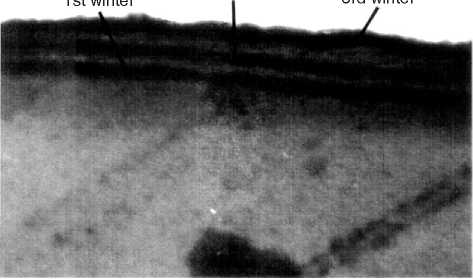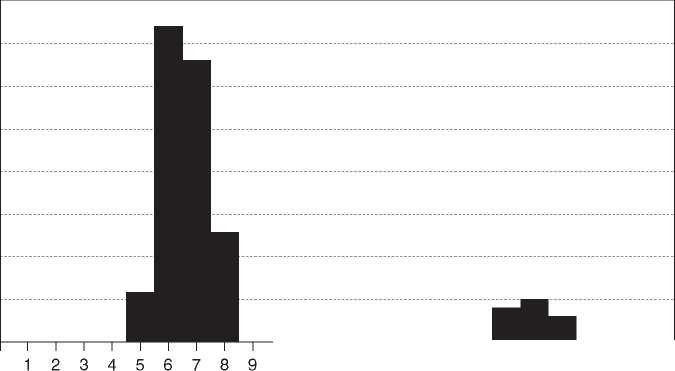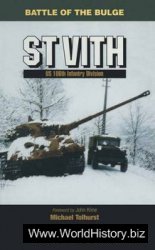Important recent investigations have been made into to the season of occupation at the famous caves and rock shelters of southwestern France, which were intensively used during the late ice age. The Upper Palaeolithic of this region is famous for its richness and diversity, not the least for the wealth of cave art found there. Some caves there show human occupation through many millennia and French archaeologists have generally believed that such sites were permanently occupied, being in a region that offered favorable living conditions. However, more recent studies have supported alternative interpretations. The well-known site of Abri Pataud is located in south-western France and the reindeer bone remains there were intensively studied by Arthur Spiess. He used several different techniques to determine the season of their death and thus the probable season of human occupation. First, study of the juvenile reindeer mandibles showed that these came from animals killed between September and March. There were also the bones of unborn reindeer, which were carried to the site with the carcasses of adult females. Comparison with the size of modern fetal reindeer bones showed that these too came from mid-winter kills. Further evidence came from the sectioning of reindeer teeth. The dental cement fixes the tooth roots in the jawbone, and seasonal changes are reflected by zones of differential growth in the cement as this is deposited. In section, these zones appear as translucent during rapid summer growth and as opaque during slower winter growth. These zones can be counted under a low power microscope, and correspond to the number of seasons passed since formation of the tooth root. Figure 3 Shows a sectioned reindeer tooth from Abri Pataud, the opaque (dark) zone at the margin of the cement showing a winter kill. Tooth sections made from four different species at Abri Pataud all gave results from winter kills.
The three techniques used at Abri Pataud made a persuasive case that the cave was predominantly used as a winter settlement, but cannot ‘prove’ that fact. In the absence of apparent summer food supplies, we can infer that the inhabitants moved elsewhere for that season, but this remains an interpretation. It is strengthened, however, by other studies of Late Palaeolithic sites in the same region, where evidence has also been found of predominantly winter-spring occupations. A general pattern emerges in which the remarkable richness of the Upper Palaeolithic of the Dordogne in south-western France can be seen

Figure 3 Section of the dental cement of a reindeer tooth from Abri Pataud, South-Western France.
• Modern females
¦ Modern males T Hureyra mean
As the product of an especially favorable refuge where the steep valleys offered winter shelter for both the herds and their human predators. Under such conditions, it would be possible to form large seasonal agglomerations of people, the cave art being a product of the heightened social interaction that would follow from this.
Other well-known examples of seasonal activity at archaeological sites come from the buffalo kill sites of the North American plains. The buffalo were extensively hunted by the early American peoples through into recent times. These mammals were an essential resource, especially for winter food, and were often taken by means of mass drives into artificial corrals, or over low cliffs, or by trapping in natural gullies. Whole herds were killed in these drives so that the season of killing can be determined from the dentition of the immature buffalo that made up part of the herds. In buffalo there is also a close relationship Between tooth eruption age and calendar age in the first two-and-a-half years of life, and this relationship is well known from modern studies. The evidence shows that the mass kills commonly occurred in the autumn or early winter months, the meat being processed and stored for winter use. The autumn meat was also fatty and this was important, even essential, for human survival. It is likely too that these winter sites represent the gathering of people in larger numbers, both to take part in the collaborative mass hunts and to use the stored meat that followed.
In the warmer and dryer landscape of Syria, the study of the seasonality of food supplies at the site of Tell Abu Hureyra has been of fundamental importance in explaining the origins of agriculture in south-western Asia. This site is of exceptional size and it was occupied from the Mesolithic period, and through the Neolithic, providing a vital record of the emergence of agriculture. The Mesolithic levels at the base of the mound give an insight into a society at the very threshold of agricultural innovation. The inhabitants of Abu Hureyra hunted the goitered gazelle (Gazella subgutturossa), the onager (Equus hemionus, a type of wild ass) and occasional wild cattle, pig, fallow deer, and some smaller mammals. The early levels, occupied from 11500 to 8300 BP, contained huge numbers of gazelle bones and many of these were from very young individuals. This raised questions about both the manner of the hunting and the season in which this was done. The University of Moscow has a good sample of modern skulls of these gazelles, each with a known death date. A study of this sample provided the background data for understanding the hunting at Abu Hureyra. In grazing mammals the process of tooth wear quickly reduces the height of the deciduous (milk) teeth and this process is related to the animal’s age. Goitered gazelles replace their milk teeth at just over one year of age. Figure 4 Shows the data for the crown height of the lower third milk molar taken from the sample of modern gazelles. The birth date of the individual gazelles is not known, though their birth season is short, being no more than a few weeks. For this study the birth date was taken as approximately mid-May, as in this species of gazelle now. The crown height of each milk molar from the modern sample was measured and this was plotted against its weeks of age, counting from mid-May to the death date. The third milk molars of the ancient gazelles, from Mesolithic and Early Neolithic Abu Hureyra, were then compared with the modern specimens in Figure 4. The ancient gazelle milk teeth were found to be in one of two wear states, either unworn or heavily worn. None were found between these extremes. If the cull of gazelles was year round, milk teeth at all states of wear would be found, so that the data immediately suggested that the gazelle cull was highly seasonal. The average crown height measurement for the two groups (unworn and heavily worn) was compared with the modern data. The unworn milk teeth were of newborn gazelles, from the birth season in May. The heavily worn milk teeth were also from gazelles killed in May, but one year older. The absence of intermediate wear states showed that the gazelles were killed in a very short season. This remarkable result led on to another question. Did the people of Abu Hureyra move elsewhere for most of the year? The answer to this comes from the charred plant remains. These too were abundant, having been carefully recovered during the excavation, and provided the vital evidence which explained the nature of this early settlement. Gordon Hillman’s remarkable analysis of these charred remains showed that at least 120 different wild plant species had been used for food
Weeks of age
Figure 4 Enamel crown height of the third milk molar of modern gazelles (Moscow collection) compared with ancient specimens from Tell Abu Hureyra, Syria.
During the Mesolithic settlement at Abu Hureyra; a time before farming had begun. Gathering activities were year round, as the seasons of use for these plants were different, and together these spanned most of the year. For example, five species of wild cereals were harvested in early summer and later in the year other plant foods such the nutlets of Club Rush (Scirpus maritimus) were available. The nearby Euphrates river valley then provided tuber and root foods which were at their best in winter. The depth and detail of this important study gives convincing evidence that the people of Mesolithic Abu Hureyra were indeed wholly sedentary, a situation that is a necessary precursor for the development of full-scale agriculture. How was the seasonal supply of gazelle meat used in a sedentary community? Evidence from the archaeology and from historical writers showed that the gazelles and onagers were migratory, moving north to the region of Abu Hureyra in spring to give birth. The gazelles were intercepted by driving them into huge enclosures, specially built for that purpose, where the entire herds were killed. European travelers’ tales from Syria in the recent past commonly tell us that salted, dried gazelle meat was widely used there. There is evidence from the bone remains that the gazelle meat at Abu Hureyra was preserved in this way too. Thus, the season of gazelle killing bore no relationship to the season of gazelle meat consumption, which was year round.
Later in these same levels there is a marked reduction in the diversity of plant foods, caused by the onset of a severe climatic deterioration known as the Younger Dryas. This severe cold oscillation came just as the ice age was ending, and this again reduced the diversity of wild plant foods that were available in the Syrian steppe, thus initiating that most worldchanging event of them all: the appearance of the first domestic cereals, the beginnings of agriculture. The first domestic cereal was a type of wild rye (Secale cereale) which appeared in a new form through human interference during the later Mesolithic occupation. Soon after this, cultivated species of wheat, barley, and lentils are found, with domestic forms of sheep and goat. Without the evidence from the charred remains of plant foods, the Mesolithic settlement might have been interpreted as a seasonal encampment from the bone evidence. Abu Hureyra thus presents an illuminating example in which different but complementary investigations have revealed how the first settled communities in this region moved toward the domestication of the important species of food plants and animals that we use now.
The determination of season of death in domestic mammals presents more of a problem as their birth season may be less clearly defined. In wild species the timing of the birth season is conditioned by natural events such as changing day length and other seasonal factors, leading to births at a time best suited to the survival of the young. Under domestication, it is possible that human intervention might significantly modify the birth season, usually by controlling contact between the adult males and females during their fertile cycle. Such means can be used to extend the birth season, even over several months, when the human owners see a reason to do so. Thus, while we may reasonably assume that certain wild mammals in past times gave birth in spring since they do so now, this assumption cannot readily be made for mammals under direct human control. A large sample of sheep mandibles from an Iron Age and Roman temple site near Harlow in Essex, England, provided better evidence for the birth season in ancient sheep flocks. Many young sheep were sacrificed at the temple site, and the tooth development in their mandibles showed them to be from two quite different age classes. The youngest group of sacrificial lambs were aged between 6 and 8 months, and the second, older groups were aged from 18 to 20 months (Figure 5). Both the prehistoric Iron Age levels and those of the Roman period showed the same pattern, suggesting a strong continuity in religious practice through this time. Sheep in England now give birth in spring, the season controlled largely by changing day length. If we assume that the Iron Age and Roman sheep also gave birth in spring, those aged 6-8 months would have been killed in late summer or autumn, and the older group aged 18-20 months would also have been killed at this time. This is a pattern very like the gazelle cull at Abu Hureyra, though for a very different reason. If human interference had caused these Iron Age and Roman sheep to give birth through much of the year, it would then have required very careful selection to produce the distribution of ages that were found. The person choosing the sacrificial lamb would need to closely scrutinize the teeth to make sure that the right age was selected. This is rather less likely than an alternative explanation, that the Iron Age and Roman sheep were born in the spring, then as now, and that they were all killed at one time of year, in a single season of sacrifice around harvest time. Presumably, the age selected, either a lamb or a yearling sheep, depended upon the wealth or devotion of the person who made the offering.
Valuable evidence for seasonal use of foods can also come from incremental growth structures in the skeletons of fishes or from similar growth patterns in molluscan shells, each related to seasonal variations. Periods of unequal growth, usually in response to changes in day length and seasonal temperature, are

Figure 5 Age at death of lambs from Harlow Roman Temple, Essex, England.
Expressed by the formation of banding, sometimes visible as surface ridges (‘annuli’) in bony structures like vertebrae, scales, and otoliths (‘ear stones’) of fishes. The banding in fish otoliths is composed of wide opaque zones formed during rapid growth and narrow translucent zones formed during slower growth, these zones caused by the annual seasonal fluctuation, akin to the zoning in the dental cement of mammals. The season of capture can be determined from the zone that was formed at the margin of the otolith. Where any of these methods is used, it is vital that adequate samples of the local fish or shellfish populations are studied as a basis for comparison with the archaeological material. Mesolithic middens were investigated on the island of Oronsay in Scotland in precisely this manner. Careful sieving during excavation yielded large numbers of otoliths of juvenile saithe (or coalfish, Pollachius virens). The archaeological analysis of the fish otoliths began by the catching of a sample of local saithe to provide otolith data from individuals of known capture date and body weight. These modern otoliths were first studied to confirm the utility of the method, and to establish the relationship between age of the fish and body weight. In fact, in these juvenile fish with rapid growth, the length of the otoliths alone was sufficient to provide good evidence for seasonal capture, each archaeological site having otoliths only of certain size classes. Such methodology has a very great advantage in its simplicity; length measurement is rapid, accurate, and cheap, and is easily applied to the entire otolith sample without the need for laboratory preparation or microscopic examination. More elaborate methods may give excellent results but are costly in time and equipment and, for this reason, the
Archaeological sample tested may be rather few. At the Oronsay middens, the distribution of otolith length measurements showed two peaks of abundance, one from smaller fish and one from larger, though the season of catching differed from one midden to the next. Each peak represented a different age class, but both groups were killed in the same season. The data showed that the different middens were occupied in a different season, the fish at one site being taken from the end of June to mid August while at another the fish catch was early September to early December.
Shellfish are commonly found in archaeological sites, in numbers varying from a few shells to many millions in huge shell mounds, well known in Europe from Denmark and Portugal and widely in other continents too. In Europe the shell mounds were accumulated through the Mesolithic period and have attracted much archaeological investigation because of their great size and the huge numbers of shells they contain. Some archaeologists have viewed these middens as year-round settlements because of the sheer magnitude. Possibly this was so, but evidence for the season of use and of other potential foods must be considered before such judgements are made. Oysters and other shellfish have a rather low food value of about 50kcal per 100 grams of meat and for this reason alone it is unlikely that people were sustained year-round on shellfish as a major staple. An active person living in a cool climate needs at least 2500 kcal of food energy each day. A person would need to eat several kilograms of shellfish meat each day to maintain this energy intake! In most instances we now know that shellfish were a rather minor component of the annual diet, and that occupation at shell middens was often in short episodes, at one or more times through the year. The collection season of the shellfish can usually be determined by a number of means. This may be as simple as the measurement of shell size, a method that is of use with fast-growing species. When gathered in one season, the shells will show a restricted size distribution. This was found in a species of scallop (Argopecten irradians concentri-cus), collected during summer in Florida waters. Thin sectioning of the shells is also valuable in some instances, and recent work has concentrated on sectioning the dense hinge region of the bivalve shell. In one such study a large sample of modern oyster shells were examined in a blind test and the annual lines formed in them allowed rather more than 90% to be determined for the season of collection. A more elaborate technique applied to marine shells relies upon the measurement of the oxygen isotope ratio in the shell. The stable isotopes 18O and 16O exist in a ratio which does not change through time. However, the different mass of the isotopes means that their ratio in seawater depends upon the temperature. During growth of the shell, oxygen is used in building the shell material and the prevailing ratio of the two forms of oxygen is thus recorded. Closely spaced samples are drilled from a radial section across the shell and the isotopic ratio in each sample is measured by means of mass spectrometry. The resulting data are plotted and show the rising and falling temperatures of one or more summer-winter cycles. When this cycle is established from a sample of shells, and with well-preserved archaeological shell material, it may be possible to sample only the margins from a larger series of shells to establish the time of year in which the shells were collected.
The value of these marine foods in huntinggathering societies lay in their predictability, in the comparative ease with which they were captured, and in the simple technology that was needed. This provided a secure food supply, which was only part of a highly diverse annual diet. Yet the discarded shells have a very high visibility in the archaeological sediments when compared to other food wastes, and this led to the belief that shellfish were of a higher importance in the annual diet than is likely to have been the case. An excellent example of modern shell midden studies is shown in recent work at the Turner Farm site in Maine, North America. Here, a shell midden was largely made up of the soft shell clam (Mya arenaria). Analysis of shell sections from two prehistoric levels showed that the shellfish were gathered in late winter and spring. Yet other evidence showed that the site was occupied for much longer, even through most of the year, in particular evidence from the teeth and bones of white-tailed deer (Odocoileus virginianus). There is a brief gap in the occupation evident in mid-summer, when it is suggested that the community relocated to another site in the area, probably to catch migratory fish. The faunal remains at Turner Farm include several other species of terrestrial and marine mammals, besides fish and bird bone - and the highly visible shellfish. However, the excavator has interpreted the shellfish as only a ‘secondary’ resource when compared with the abundant mammalian fauna, which were a more important energy source.
The study of seasonal occupation at archaeological sites has developed greatly in recent times as archaeologists have made critical attempts to comprehend the meaning of their data. There has been increasing interest in the human use of landscapes and the patterns of occupation within a regional context, rather than the focus on individual sites. The determination of the seasonality of food supplies and of residence at particular sites is an essential component of these investigations. The available techniques of study are many, though these vary in complexity, and in the expenditure of time and cost that are needed. The study of growth and development of teeth and bones in young animals is important, as are examinations of the seasonal growth episodes in otoliths or shells. These methods are cheap, reliable, and are simple in use. Simplicity is an important advantage as rapid techniques allow observations to be made on larger number of specimens. When the seasonal use of a food is established, it then becomes important for the archaeologist to consider the value of this resource in the annual diet. At the seasonal bison kill sites in North America or the reindeer hunting sites in Ice Age Europe, few other human foods beyond animal fats and protein of the prey have been identified and, in a very cold climate, it is unlikely that and such alternative foods were available. Elsewhere, in more temperate regions, it remains an important task to fill in the annual cycle of hunting-gathering peoples, both in the locations of their sites and in possible dietary shifts through the year. It must always be remembered that, at any archaeological site, the seasonal use of any one food does not demonstrate that the site was occupied only in that season. Only when there is good evidence for the seasonal use of ‘major’ food resources, and with an evident lack of foods available at other times, are there grounds for interpreting the site as a seasonal encampment.
See also: Americas, North: Plains; Archaeometry; Asia, West: Mesolithic Cultures; Europe, Northern and Western: Mesolithic Cultures; Invertebrate Analysis; Stable Isotope Analysis; Vertebrate Analysis.




 World History
World History









